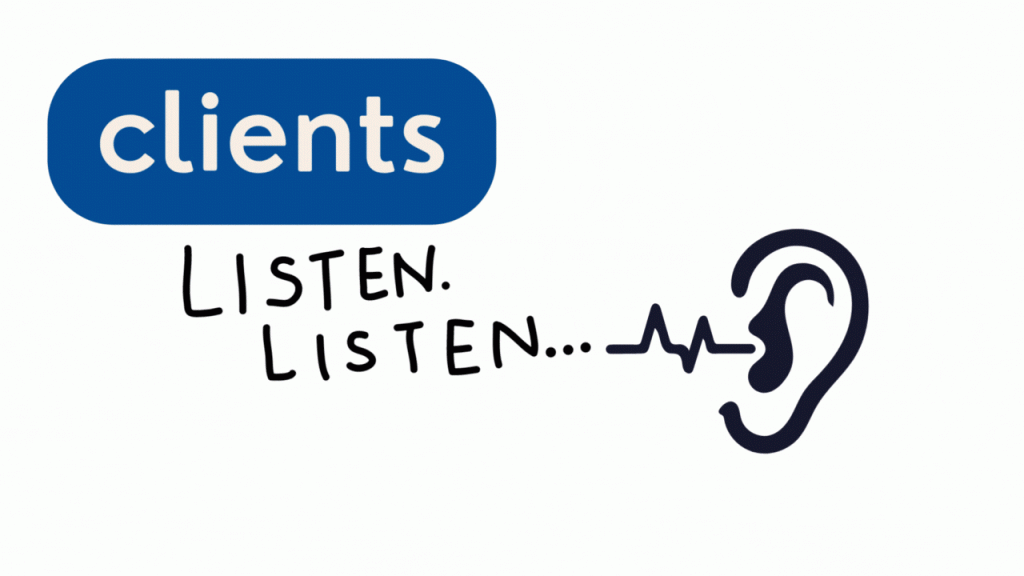Conquer Every Corner with 360 Digital Marketing Services
1 month agoHow to deal with Difficult Clients in your Business?
1 year ago -

Dealing with difficult clients can be a challenge, but it is important to remember that these clients are still customers and should be treated with respect. There are some simple strategies that you can use to help make the situation easier. The best way to deal with difficult clients is to be patient, listen to their concerns, and remain professional. Try to understand the issue from their perspective, and use empathy rather than getting angry or frustrated. If possible, try to come to an agreement that both parties can live with. If the customer is still not satisfied, consider offering a refund, or some other form of compensation. Above all, be sure to document the conversation in case there are any further issues.
Top 10 ways to deal with difficult clients
- Listen to their concerns – Take the time to really listen to what your client is saying. This can help you identify the root of the problem and find a way to address it.
- Ask questions – Asking questions can help you better understand the issue and the client’s needs. That way, you can better determine how to resolve the issue.
- Stay calm – No matter how frustrated the client is, keep your cool and remain professional. This will help you remain clear-headed and better able to handle the situation.
- Acknowledge their feelings – Showing empathy and understanding can help diffuse the situation.
- Suggest solutions – Provide the client with potential solutions and allow them to choose the one that works best for them.
- Be flexible – Be open to considering different options to accommodate the client’s needs.
- Set boundaries – Make sure the client understands that you’re there to help, but only within certain limits.
- Take a break – If the situation is getting heated, suggest taking a break for a few minutes to cool off.
- Document the conversation – It can be helpful to document the conversation to ensure that both parties are on the same page.
- Follow-up – Follow up with the client to make sure that the issue was resolved to their satisfaction.
Also Read: What are the Top 10 Digital Marketing Trends? Strategy Coming Next
Listen to their concerns

Listening to someone’s concerns is an important part of building trust and understanding. It shows that you care about their feelings and can help them open up. Listening can help build relationships, improve communication, and help you gain a better understanding of the situation. Make sure to be open-minded and attentive, so you can provide the best support and advice possible. Ask questions when needed and be patient. Most importantly, be sure to validate their feelings and give them the space to express themselves.
Ask Questions

Asking questions is a great way to gain knowledge and understanding. It’s important to phrase your questions in a way that is clear and easy to understand. To make sure your questions are helpful, consider what information you are looking for and how the client you are asking may best be able to provide it. Additionally, be open to different perspectives and ask questions that allow for a variety of responses. Lastly, be polite and respectful when asking questions, as this will often result in more helpful responses.
Stay Calm
Staying calm can be a difficult task, especially when faced with a challenging situation. However, it is an important skill to possess in order to remain productive and effective. Here are some tips to help you stay calm:

- Acknowledge your emotions. Recognizing and acknowledging your emotions is the first step to being able to stay calm. Once you can recognize your feelings and identify them, it will be easier to manage them.
- Take a deep breath. Taking a few deep breaths can help slow down your heart rate and help you to think more clearly.
- Step away. If you’re feeling overwhelmed and can’t seem to get a grip on your emotions, it’s better to take a step back and take a few minutes to yourself.
- Speak positively. Talking to yourself in a positive manner can help to put things in perspective and help you stay calm. Click the link to read more.
- Find a distraction. Find something that can take your mind off of the situation and help you stay focused on the present.
Staying calm is an important skill to master, and with practice, it will become easier to do.
Acknowledge their feelings
Acknowledging someone’s feelings is an important part of showing them respect and understanding. Doing so acknowledges that clients’ emotions are valid, and allows them to feel heard. When someone shares their feelings with you, it is important to take the time to actively listen and respond in a supportive manner. You can let them know that you understand by repeating back what they said in your own words, or by asking clarifying questions to make sure you understand the client’s feelings. It is also important to refrain from making any judgments or offering unsolicited advice, as this can make the other person feel invalidated. Showing that you are listening and understanding can go a long way in showing someone that you care.
Suggest Solutions

When faced with a problem or challenge, one of the best ways to find a solution is to brainstorm possible solutions. Start by writing down all the ideas that come to mind, no matter how far-fetched or unorthodox clients may seem. Then, analyze each option and consider the pros and cons of each one. From there, you can narrow down the list to a few choices and evaluate which one is the most viable option. Additionally, if you can, consult with others to get their perspective and ideas on the matter. Working together can often help you come up with innovative solutions that you might not have thought of alone.
Be Flexible with Clients
Being flexible with clients is an important part of providing excellent customer service. It’s important to understand that each client is unique and has different needs. Showing a willingness to work with clients to find the best solution to their needs shows them that you value their business and are committed to providing the best possible service. This can help build trust and loyalty between you and your clients.
Additionally, it’s important to remain patient and understanding when working with clients, as it’s not always easy for them to explain their needs or concerns. It’s important to take the time to listen and explain things in a way that makes sense to them. Keeping communication open and honest will help ensure that you and your client are on the same page and that both parties are satisfied with the end result.
Set Boundaries with Clients

It’s important to establish clear boundaries with clients when providing services. This can help build trust and ensure a professional relationship. Here are some tips for setting boundaries:
- Set limits on the type and amount of work you are willing to do. Let clients know the scope of your services and what you are not willing to do.
- Let clients know when you are available and when you are not. This can help you manage your workload and avoid burnout.
- Establish clear expectations for communication. Let clients know how often you will be in touch and how to contact you.
- Respect your own time and set limits for yourself. Don’t be afraid to say no if a client asks for something that goes beyond your services or takes away from your personal time.
- Establish payment expectations upfront. Make sure clients understand how and when you expect to be paid.
By setting boundaries and expectations with clients, you can ensure a productive and professional relationship.
Take a Break
Taking a break can be an important part of self-care. It can provide an opportunity to refocus and gain clarity on your goals and objectives. Taking a break from your daily routine can help you to reset your mental and physical health as well as gain a new perspective on life. There are many different ways to take a break, such as taking a walk or going for a bike ride, reading a book, taking a nap, spending time with friends and family, or simply taking a few moments to yourself to relax and reflect. Taking a break can help to reduce stress, improve concentration, and give you more energy and motivation to tackle the tasks that you need to. So remember to take a break when you need it and enjoy the time that you have to yourself.
Document the Conversation

Hi, thank you for reaching out. We are happy to help you document the conversation with your clients. Here are some tips to help you get started:
- Take notes during the conversation so that you can capture all of the important points discussed.
- Ask questions to clarify any points that may not be clear.
- Summarize the conversation at the end of the meeting to ensure that everyone is on the same page.
- Write down any action items or tasks to be completed.
- Use active language to document the conversation, such as “We agreed to…” or “We decided that…”
I hope these tips help you document your conversations with clients. If you have any further questions, don’t hesitate to reach out.
Follow-up with Clients

Following up with clients is an important part of the customer service process. It helps to ensure that customers are happy with the services or products that you provide and that their needs are being met. Here are some tips for following up with clients:
- Reach out soon after the initial contact. You should reach out to clients within 24 hours of the initial contact in order to show that you value their business and that you are available to address any questions or concerns that they may have.
- Ask how you can help. When reaching out to clients, it’s important to ask how you can help. This shows that you are invested in their satisfaction and that you are willing to go the extra mile in order to ensure that their needs are met.
- Follow up regularly. You should follow up with clients on a regular basis in order to check in on their progress and to ensure that they are still satisfied with your services or product.
- Be available. If a client has a question or issue, it’s important that you are available to address it in a timely manner. You should also let them know that you are available to answer any questions that they may have.
By following these tips, you will be able to ensure that your clients are satisfied with your services and that their needs are being met.
Explain any policies or procedures that may be relevant, but try to provide reasonable solutions that can benefit both parties. Finally, be sure to follow up with the client after the situation has been resolved. This will help to ensure that the client feels heard and that their needs have been taken into consideration.
Latest Posts
- AI is Product or Feature ? Comparison of AI as Product vs Feature
- Social Media Marketing Strategy for Small Business Success
- Working as a Digital Marketing Expert in Nepal 2024: Nepali Market
- Digital Marketing Scope in Nepal: Seize Opportunities Today!

























